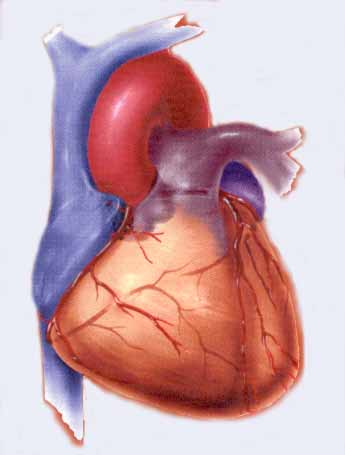|
There is no standard way that states make outcomes reports available to consumers
and only four states report their heart surgery outcomes data
to the public. States that make this critical information available
historically see a decline in mortality rates, and that's great news for consumers!
Be careful when evaluating this
data as by the time it is gathered, sorted, risk-stratified and posted,
it is at least three years old. The information is useful for discussion
with your primary care practitioner and insurer to help
guide you to make the best care decision, based on your particular needs and
individual risk.
Consumer Reports provides a list
of links rating hospitals on a variety of health conditions.
Click here
for Consumer Reports on Health.
Links to States' Cardiac Surgery Report Cards
Background
About 68 million Americans have some form of heart-related
disease. It is the leading cause of death in the United States.
Atherosclerotic coronary artery disease occurs when the arteries
that supply blood to the heart muscle become lined with fatty deposits that
harden and become partially blocked. The amount of blood reaching the heart is
reduced. The reduced flow of blood can cause chest pain (angina), or a
heart attack. Heart disease is, by far, the leading cause of
death in the U.S. and atherosclerotic coronary artery disease
is the most common form of heart disease.
Different treatments are recommended for different patients.
For some, changes in lifestyle (dietary changes,
not smoking, regular exercise) can result in great improvements in health.
For others, medication is prescribed -- to treat high blood pressure or some other
conditions. Sometimes with coronary artery disease, surgery is advised.
Cardiac catheterization is a diagnostic tool used to definitively
diagnosis the extent of blockages in the coronary arteries and to determine
whether or not surgery is needed. A long, thin tube, called a catheter, is
inserted into a blood vessel in the groin and threaded into the coronary arteries.
Dye is injected through the catheter and X-rays of the vessels are then taken.
If surgery is advised, the two common procedures performed
on patients with coronary artery disease are coronary artery bypass graft
(CABG) surgery and percutaneous transluminal coronary angioplasty (PTCA).
Coronary artery bypass graft srugery is a procedure in which a vein or artery
from another part of the body is used to create an alternate path for blood to
flow to the heart, bypassing the arterial blockage. Typically, a section of one
of the large (saphenous) veins in the leg, the radial artery in the arm or the
mammary artery in the chest is used to construct the bypass. One or more bypasses
may be performed during a single operation, since providing several routes for
the blood supply to travel is believed to improve long-term success for the procedure.
Triple and quadruple bypasses are often done for this reason, not necessarily
because the patient's condition is more severe. CABG surgery is one of the most common
successful major operations currently performed in the United States.
In 1999, approximately 700,000 procedures were performed in the U.S. alone.
Many factors can influence the outcome of coronary artery bypass surgery.
These include the patient's health before the procedure, the patient feeling
supported and in control of the decision-making,
general after care, and most important - the skill of the operating
team. Practice makes perfect and a surgeon who operates on
300 patients a year has much more experience and skill than a surgeon who only performs
100 or less operations a year.
Additional considerations are "on-pump" versus "off-pump". On-pump refers to use
of the heart bypass machine, which poses an independent risk
to the patient (i.e. kidney function impairment, ischemia (reduced blood flow) to
the brain with resultant memory impairment and generalized swelling, just to name a few)
however, operating on a beating heart requires
a great deal more surgical skill. More and more surgeons are aquiring this
skill in response to consumer demand. The trend is also for less invasive procedures
with angioplasty leading the way in new advancements.
State reports on heart surgery outcomes are referred to as “Report Cards“.
On-line Report Cards are intended for patients, families of patients who are
considering coronary artery bypass surgery and health care providers. It provides
data on risk factors associated with bypass surgery mortality and lists hospital
and physician-specific mortality rates which have been adjusted to account for
differences in patient severity of illness, and other risks (e.g. older age and
being of female gender).
Related links:
Bloodless Care Options
Questions to Ask Before You Have Heart Surgery (pdf format)
|


























